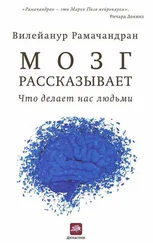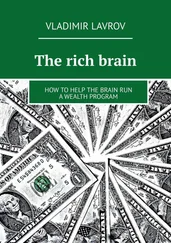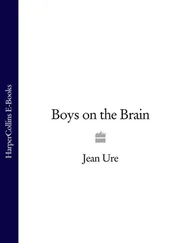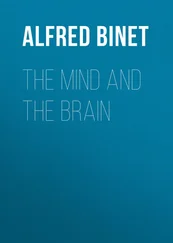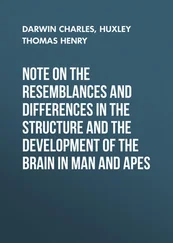Posner, M., and M. Raichle. 1997. Images of Mind . New York: W.H. Freeman.
Pribram, K. “The Role of Analogy in Transcending Limits in the Brain Sciences.” Daedalus , 109(2): 19–38.
Profet, M. 1997. Pregnancy Sickness . Reading, MA: Addison-Wesley.
Ramachandran, V.S. 1988a. “Perception of Depth from Shading.” Sci Am , 269: 76–83.
Ramachandran, V.S. 1988b. “Perception of Shape from Shading.” Nature , 331: 163–166.
Ramachandran, V.S. 1988c. “Interactions Between Motion, Depth, Color and Form: The Utilitarian Theory of Perception.” In C. Blakemore (ed.), Vision: Coding and Efficiency (Essays in Honour of H.B. Barlow) . Cambridge: Cambridge University Press.
Ramachandran, V.S. 1989a. Vision: A Biological Perspective. Presidential Lecture Given at the Annual Meeting of the Society for Neuroscience, Phoenix, AZ.
Ramachandran, V.S. 1989b. “The Neurobiology of Perception.” Presidential Lecture at the Annual Meeting of the Society for Neuroscience, Phoenix, AZ.
Ramachandran, V.S. 1990. “Visual Perception in People and Machines.” In A. Blake and T. Troscianko (eds.), Al and the Eye . Sussex, Eng.: John Wiley and Sons, 21–77.
Ramachandran, V.S. 1991. “Form, Motion, and Binocular Rivalry.” Science , 251: 950–951.
Ramachandran, V.S. 1992. “Blind Spots.” Sci Am , 266:85–91.
Ramachandran, V.S. 1993a. “Behavioral and MEG Correlates of Neural Plasticity in the Adult Human Brain.” Proc Natl Acad Sci USA , 90:10413–10420.
Ramachandran, V.S. 1993b. “Filling in Gaps in Perception: Part II. Scotomas and Phantom Limbs.” Curr Directions Psychol Sci , 2:56–65.
Ramachandran, V.S. 1994. “Phantom Limbs, Neglect Syndromes, Repressed Memories and Freudian Psychology.” Int Rev Neurobiol , 37:291–333.
Ramachandran, V.S. 1995a. “Anosognosia in Parietal Lobe Syndrome.” Consciousness Cognition , 4:22–51.
Ramachandran, V.S. 1995b. “2-D or Not 2-D: That Is the Question.” In R.L. Gregory, J. Harris, P. Heard, and D. Rose (eds.), The Artful Eye . Oxford: Oxford University Press, 249–267.
Ramachandran, V.S. 1995c. Editor-in-Chief, Encyclopedia of Human Behavior , Vol. 1 to 4. New York: Academic Press.
Ramachandran, V.S. 1995d. “Plasticity in the Adult Human Brain: Is There Reason for Optimism?” In B. Julesz and I. Kovacs (eds.), Santa Fe Institute for Studies in the Sciences on Complexity , Vol. XXIII. Reading, MA: Addison-Wesley, 179–197.
Ramachandran, V.S. 1996. “What Neurological Syndromes Can Tell Us about Human Nature: Some Lessons from Phantom Limbs, Capgras’ Syndrome, and Anosognosia.” Cold Spring Harbor Symposia , LXI:115–134.
Ramachandran, V.S. 1997. “Why Do Gentleman Prefer Blondes?” Med Hypotheses , 48:19–20.
Ramachandran, V.S. 1998. “Evolution and Neurology of Laughter and Humor.” Med Hypotheses . In press.
Ramachandran, V.S., E.L. Altschuler, and S. Hillyer. 1997. “Mirror Agnosia.” Proc R Soc London , 264:645–647.
Ramachandran, V.S., S. Cobb, and L. Levi. 1994a. “Monocular Double Vision in Strabismus.” Neuroreport , 5:1418.
Ramachandran, V.S., S. Cobb, and L. Levi. 1994b. “The Neural Locus of Binocular Rivalry and Monocular Diplopia in Intermittent Exotropes.” Neuroreport , 5: 1141–1144.
Ramachandran, V.S., and R.L. Gregory. 1991. “Perceptual Filling In of Artificially Induced Scotomas in Human Vision.” Nature , 350:699–702.
Ramachandran, V.S., R.L. Gregory, and W. Aiken. 1993. “Perceptual Fading of Visual Texture Borders.” Vision Res , 33:717–721.
Ramachandran, V.S., and W. Hirstein. 1997. “Three Laws of Qualia.” J Consciousness Studies , 4(5–6):429–457.
Ramachandran, V.S., W. Hirstein, K.C. Armel, E. Tecoma, and V. Iragui. 1998. “The Neural Basis of Religious Experience.” Soc Neurosci Abst , 23:519.1.
Ramachandran, V.S., W. Hirstein, and D. Rogers-Ramachandran. 1998. “Phantom Limbs, Body Image, and Neural Plasticity.” IBRO News , 26(1): 10–11.
Ramachandran, V.S., L. Levi, L. Stone, D. Rogers-Ramachandran, R. McKinney, M. Stalcup, G. Arcilla, R. Zweifler, A. Schatz, and A. Flippin. 1996. “Illusions of Body Image: What They Reveal about Human Nature.” In R. Llinas and P.S. Churchland (eds.), The Mind-Brain Continuum . Cambridge, MA: MIT Press, 29–60.
Ramachandran, V.S. and D. Rogers-Ramachandran. 1996a. “Denial of Disabilities in Anosognosia.” Nature , 382:501.
Ramachandran, V.S., and D. Rogers-Ramachandran. 1996b. “Synaesthesia in Phantom Limbs Induced with Mirrors.” Proc R Soc London , 263:377–386.
Ramachandran, V.S., D. Rogers-Ramachandran, and S. Cobb. 1995. “Touching the Phantom Limb.” Nature , 377:489–490.
Ramachandran, V.S., D. Rogers-Ramachandran, and M. Stewart. 1992. “Perceptual Correlates of Massive Cortical Reorganization.” Science , 258:1159–1160.
Ramachandran, V.S., M. Stewart, and D. Rogers-Ramachandran. 1992. “Perceptual Correlates of Massive Cortical Reorganization.” Neuroreport , 3:583–586.
Riddoch, G. 1941. “Phantom Limbs and Body Shape.” Brain , 64:197.
Ridley, M. 1997. The Origins of Virtue . New York: Viking Penguin.
Robinson, R.G., K.L. Kubos, L.B. Starr, K. Rao, and T.R. Price. 1983. “Mood Changes in Stroke Patients.” Comp Psychiatry , 24:555–566.
Robinson, R.G., K.L. Kubos, and L.B. Starr. 1984. “Mood Disorders in Stroke Patients.” Brain , 107:81–93.
Rock, I. 1985. The Logic of Perception . Cambridge, MA: MIT Press.
Rodin, E., and S. Schmaltz. 1984. “The Bear-Fedio Personality Inventory.” Neurology , 34:591–596.
Rolls, E.T. 1995. “A Theory of Emotion and Consciousness, and Its Application to Understanding the Neural Basis of Emotion.” In M.S. Gazzinga (ed.), The Cognitive Neurosciences . Cambridge, MA: MIT Press.
Rossetti, Y. 1996. “Implicit Perception in Action: Short-Lived Motor Representations of Space Evidenced by Brain-Damaged and Healthy Subjects.” In P.G. Grossenbacher (ed.), Consciousness and Brain Circuitry: Neurocognitive Systems Which Mediate Subjective Experience . Advances in Consciousness Research. Philadelphia: J. Benjamins Publ.
Saadeh, E.S., and R. Melzack. 1994. “Phantom Limb Experiences in Congenital Limb-Deficient Adults.” Cortex , 30:479–485.
Sacks, O. 1984. A Leg to Stand On . New York: Harper and Row.
Sacks, O. 1985. The Man Who Mistook His Wife for a Hat . New York: Harper-Collins.
Sacks, O. 1990. Awakenings . New York: HarperPerennial Library.
Sacks, O. 1990. Seeing Voices . New York: HarperCollins.
Sacks, O. 1995. An Anthropologist on Mars . New York: Alfred A. Knopf.
Schacter, D.L. 1992. “Consciousness and Awareness in Memory and Amnesia: Critical Issues.” In A.D. Milner and M.D. Rugg (eds.), N euro psychology of Consciousness . London: Academic Press, 179–200.
Schacter, D.L. 1996. Searching for Memory . New York: Basic Books.
Schopenhauer, A. 1819. Die welt als wille und virstellung . Leipzig.
Searle, J. 1992. “Minds, Brains, and Programs.” Behav Brain Sci , 3:417–458.
Searle, J. 1994. The Rediscovery of the Mind . Cambridge, MA: MIT Press.
Sereno, M.I., A.M. Dale, J.B. Reppas, K.K. Kwong, J.W. Belliveau, T.J. Brady, B.R. Rosen, R.B. Tootell, et al. 1995. “Borders of Multiple Visual Areas in Humans Revealed by Functional Magnetic Resonance Imaging.” Science , 268: 889–893.
Читать дальше


